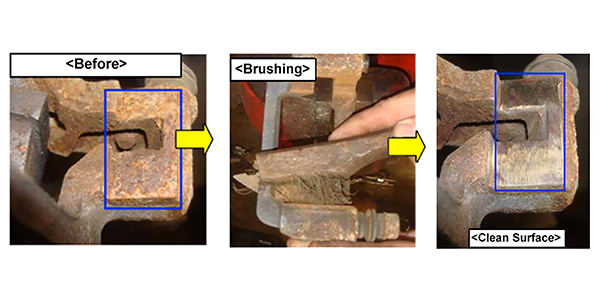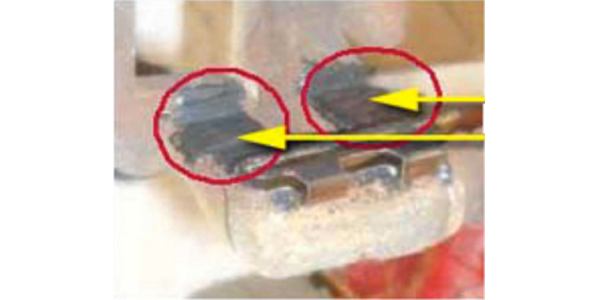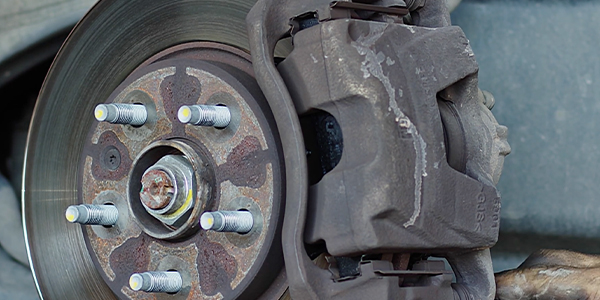
Models
Veracruz, Azera, Tiburon and Santa Fe.
Description
If a vehicle exhibits a squeaking noise originating from the rear disc brakes when applying the brakes, follow the repair procedure outlined below to correct this condition.

Service Procedure
Confirm the noise is originating from the rear disc brakes. Upon confirmation, replace the rear brake pads with the applicable part number specified in this bulletin.
Replace the rear disc brake pads by following the procedure outlined in the applicable shop manual and perform the following steps:
- Before replacing the rear brake pads, remove any corrosion from the pad retainer contact surface of the caliper carrier by using a wire brush (see Photo 1).
- Apply grease on the pad retainer contact surface of the caliper.
- Install the two new brake pad retainers packaged with the new brake pads onto the caliper carrier and apply grease on the pad retainers (see Photo 2).
CAUTION: Do not apply grease onto the friction surfaces of the brake pads. - Install two new brake pads and complete assembly of all components in the reverse order of removal.
NOTE: Make sure to install the pad with the wear indicator on the inside position. - Repeat the above procedure for the other side.













